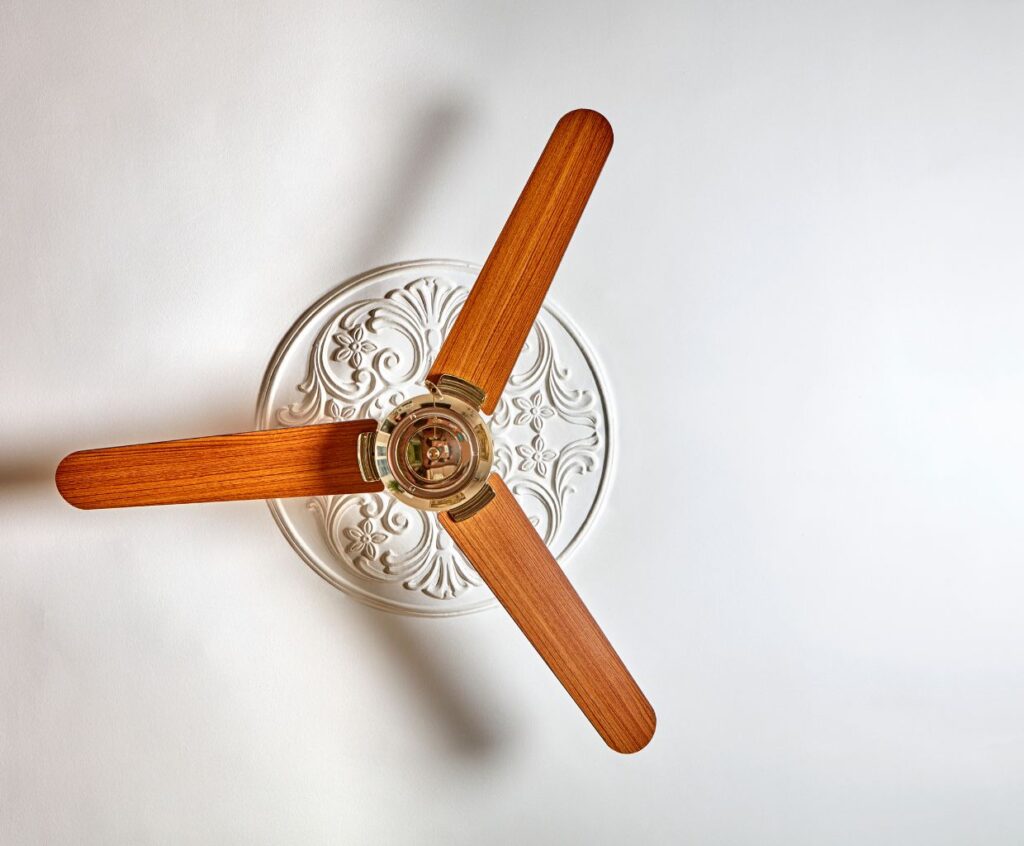Flush Mounted Ceiling Fan Buying Guide
A flush-mounted ceiling fan is installed directly into the ceiling, rather than being hung from a downrod. This means fewer visible parts, and the fan is more aesthetically pleasing.
Flush-mounted ceiling fans are ideal for rooms where you want a clean look and to make a statement. They’re also great for smaller spaces because they won’t take up much vertical space (and therefore won’t make the room feel cramped).
Contents
Flush Mounted Ceiling Fan – Explained
First, what does “flush mount” mean? Well, it’s pretty self-explanatory. It means that the fan is mounted flush or flat against the ceiling. The only thing that sticks out is the blade guard. You can also say “semi-flush” if you want to specify that nothing but the blade guard is sticking out from the ceiling.
When deciding between a flush mount or an air-suspended ceiling fan, you must consider your style and what you want your room to look like. For example, if you’re going for a more traditional look, then a flush-mount ceiling fan may not be suitable for you—you might want something with more decorative features like crystals or glass around its light fixture instead.
A flush-mount ceiling fan will be perfect if you’re going for a modern look. In addition to the style of your space, it’s essential to consider what kind of features you want your fan to have. Some fans are made with lights controlled by a remote, while others come with wall controls or pull chains. If you want to control your lights from a distance, then make sure the fan you buy has a remote. If not, consider getting one with wall controls or pull chains instead. In addition to these features, there are also other things you’ll want to think about before purchasing a ceiling fan.
No products found.
Why would you want a flush-mounted ceiling fan?
They’re typically smaller than other types of fans and tend to be more energy efficient than other types of fans because they don’t have as much moving air around them.
This makes them great for smaller spaces where having a fan installed might not work well otherwise—like an office or bedroom!
How do you install one?
If you’re going with a ceiling fan kit rather than buying individual components separately (like light kits), then installation will be easy! The hardest part will probably be getting up on your ladder without falling off—and that’s common sense!
Otherwise, follow the instructions included in your kit and have fun!
What is a hugger ceiling fan?
A hugger ceiling fan is a type of flush-mount fan mounted on the bottom of the ceiling, rather than directly above it. This allows you to use the space between the top of your sloped ceiling and its bottom as an area for storage or other uses.
Hugger fans are typically used in rooms without enough vertical space for a traditional flush-mount fan.
- See Also: Bladeless Ceiling Fans.
Can you put a flush-mount fan on a sloped ceiling?
Yes, you can! Many believe that flush-mount fans only work on flat ceilings, but that’s not true. You have to know how to mount it properly.
A flush-mount fan is a regular ceiling fan with no visible frame or blades. It looks like it’s floating in the air because it hangs from the ceiling by chains instead of resting on any stand. These fans are great for vaulted or sloped ceilings because they don’t protrude into the room as other fans do—they hang down, leaving plenty of room for furniture and other decorations underneath them.
But what if you’ve got one of those types of ceilings? Do you have to keep living with hot summer days and cold winter nights? Of course not! All you have to do is install an extender ring at the top of your ceiling beam before attaching your new flush-mount fan:
- Extender rings are small, circular pieces of metal that come in different sizes to accommodate different types of ceilings. They slide into the gaps between the ceiling beam and your fan’s mounting brackets, so they’re flush with each other, making it look like they’re resting directly on top of one another instead of hanging down from chains or other means. -The extender ring also serves as a weight-bearing device, which keeps your fan from falling if there’s an earthquake or other natural disaster.


